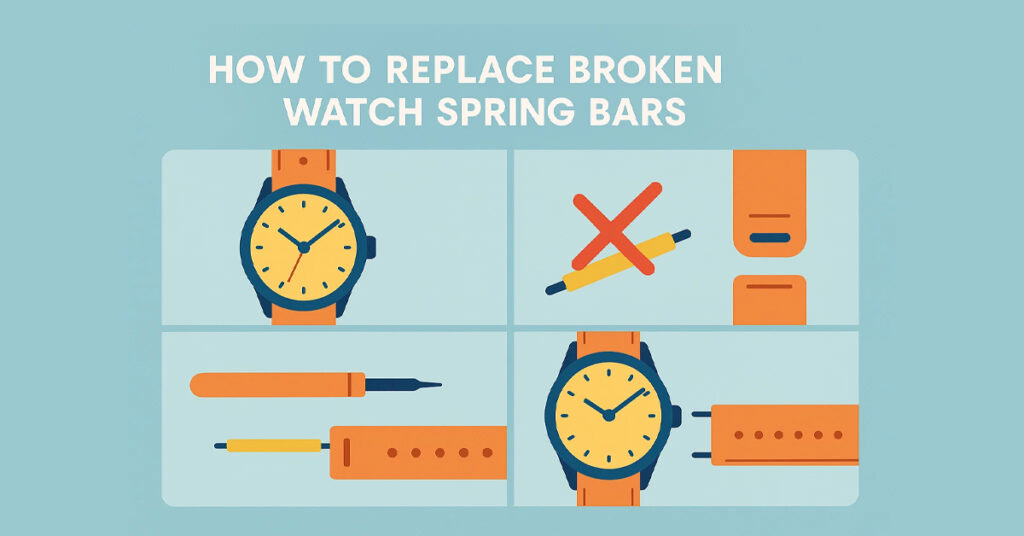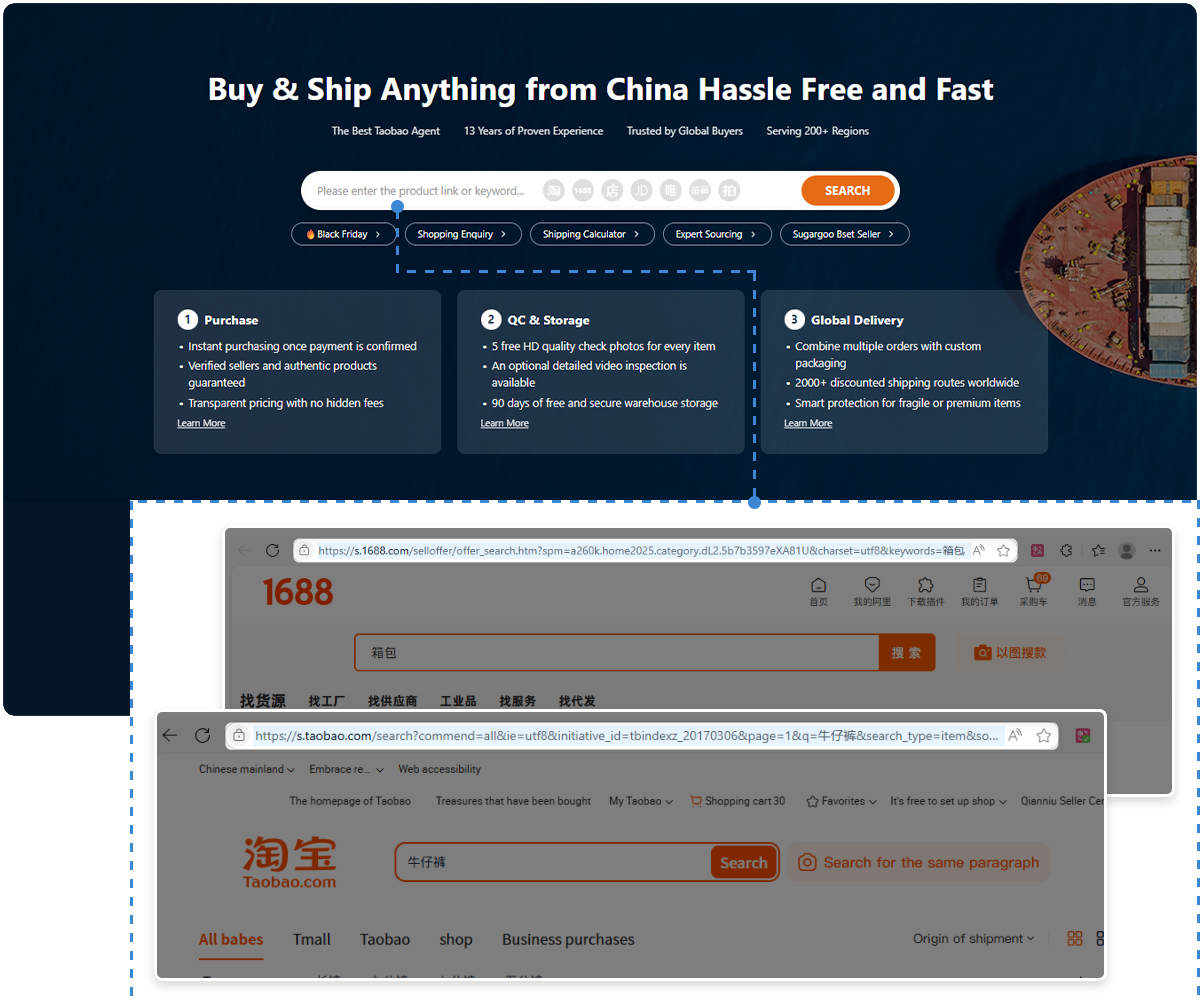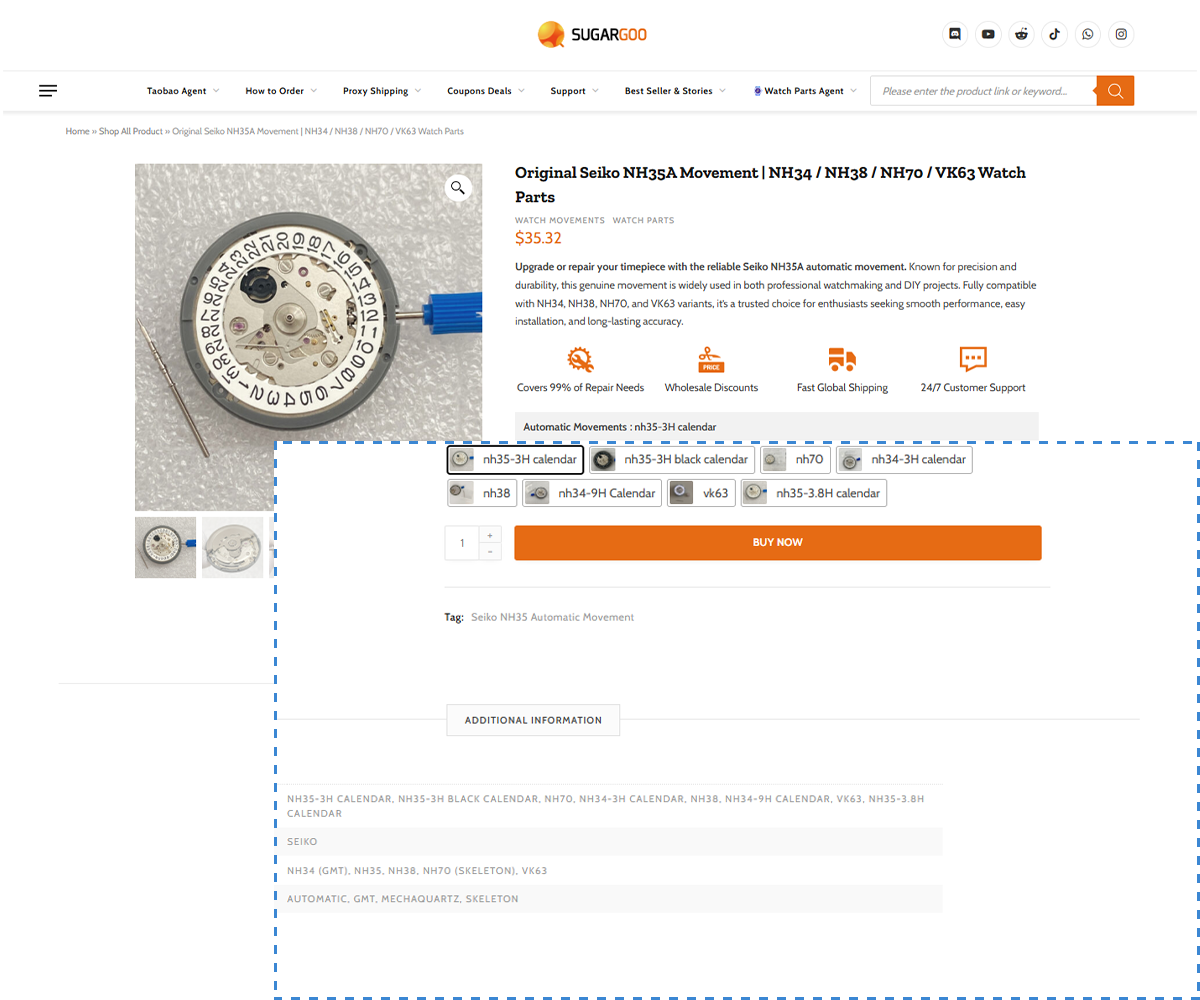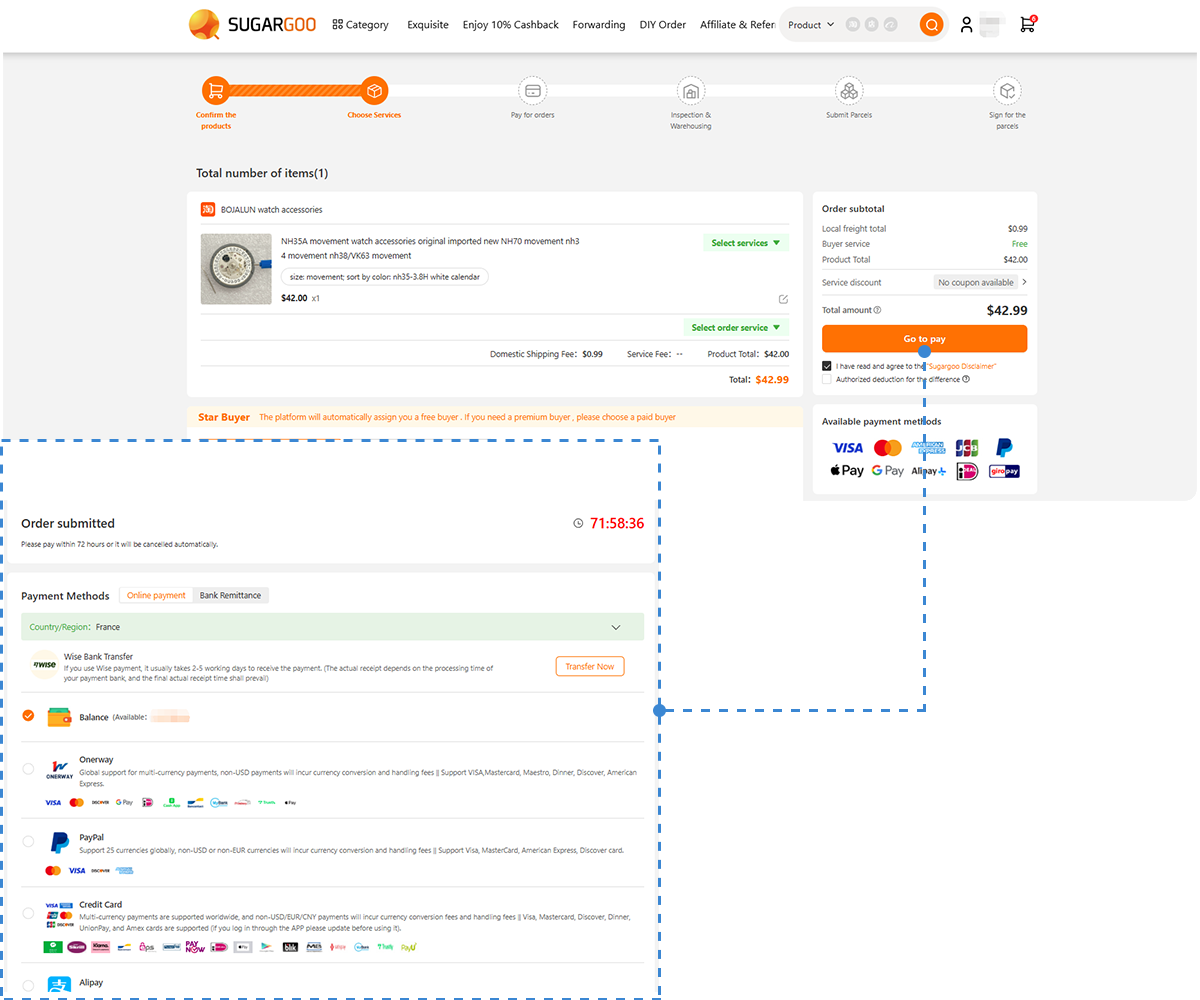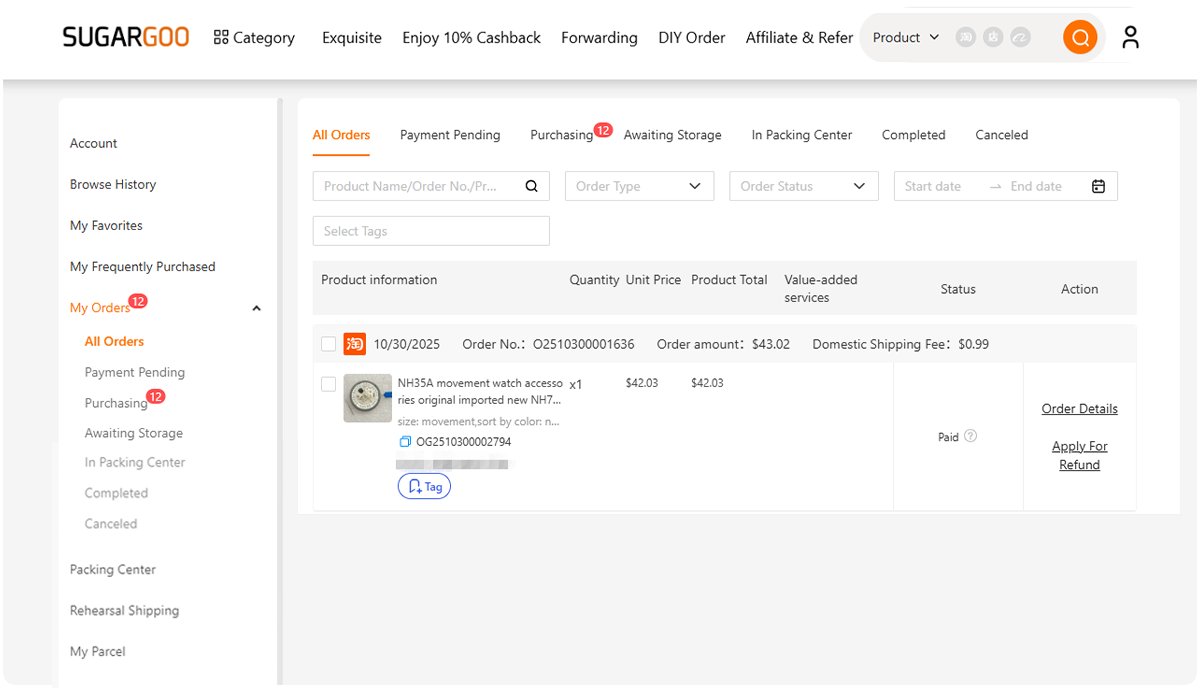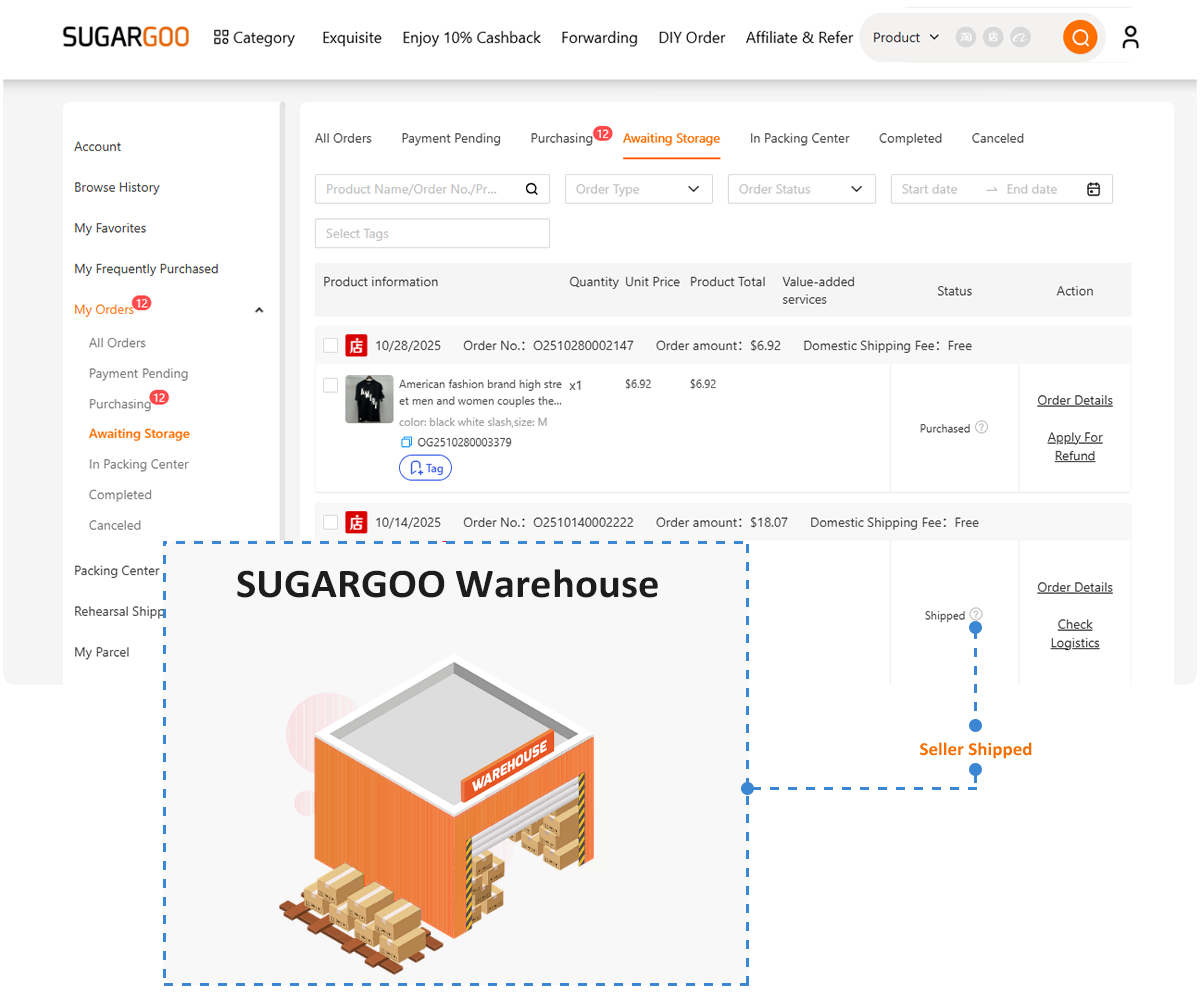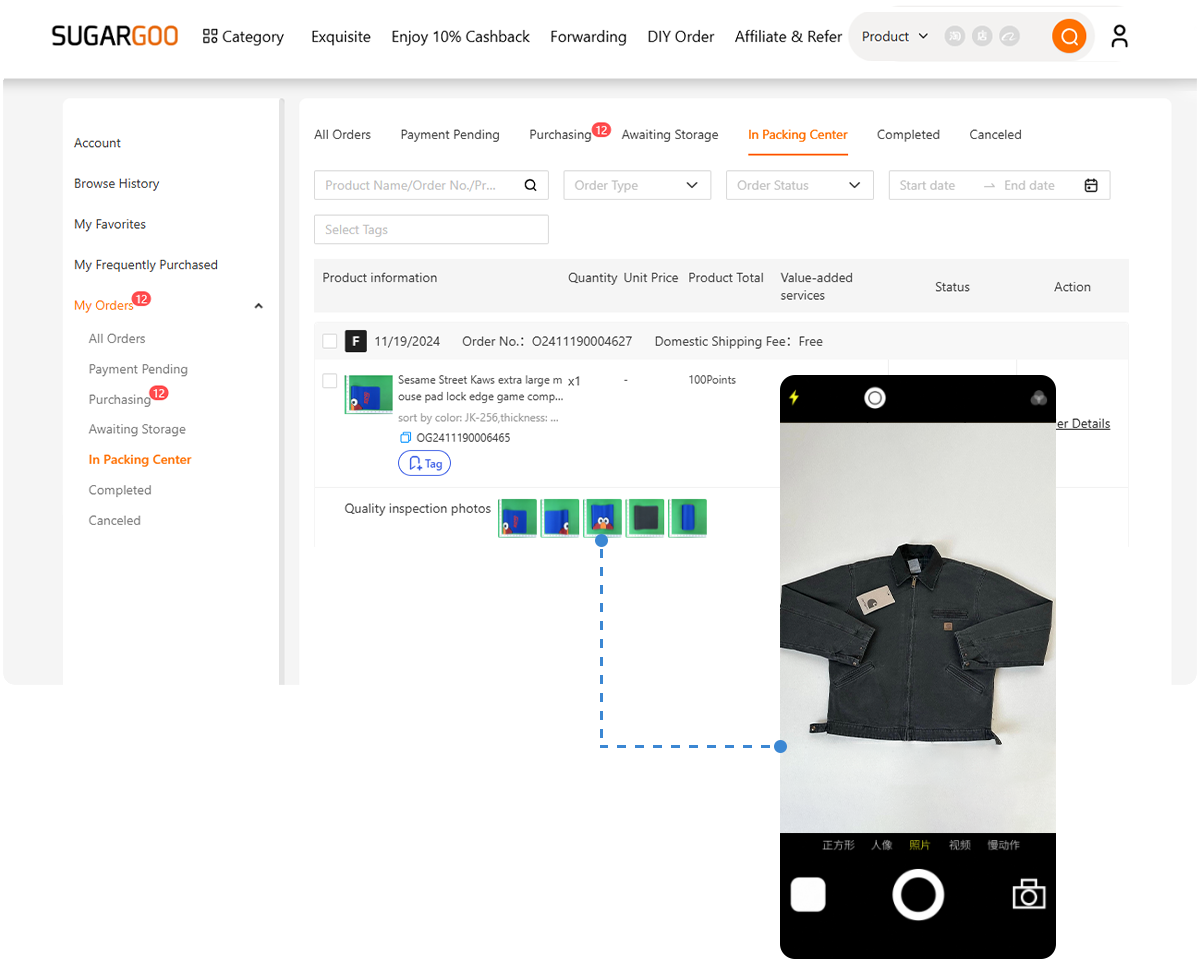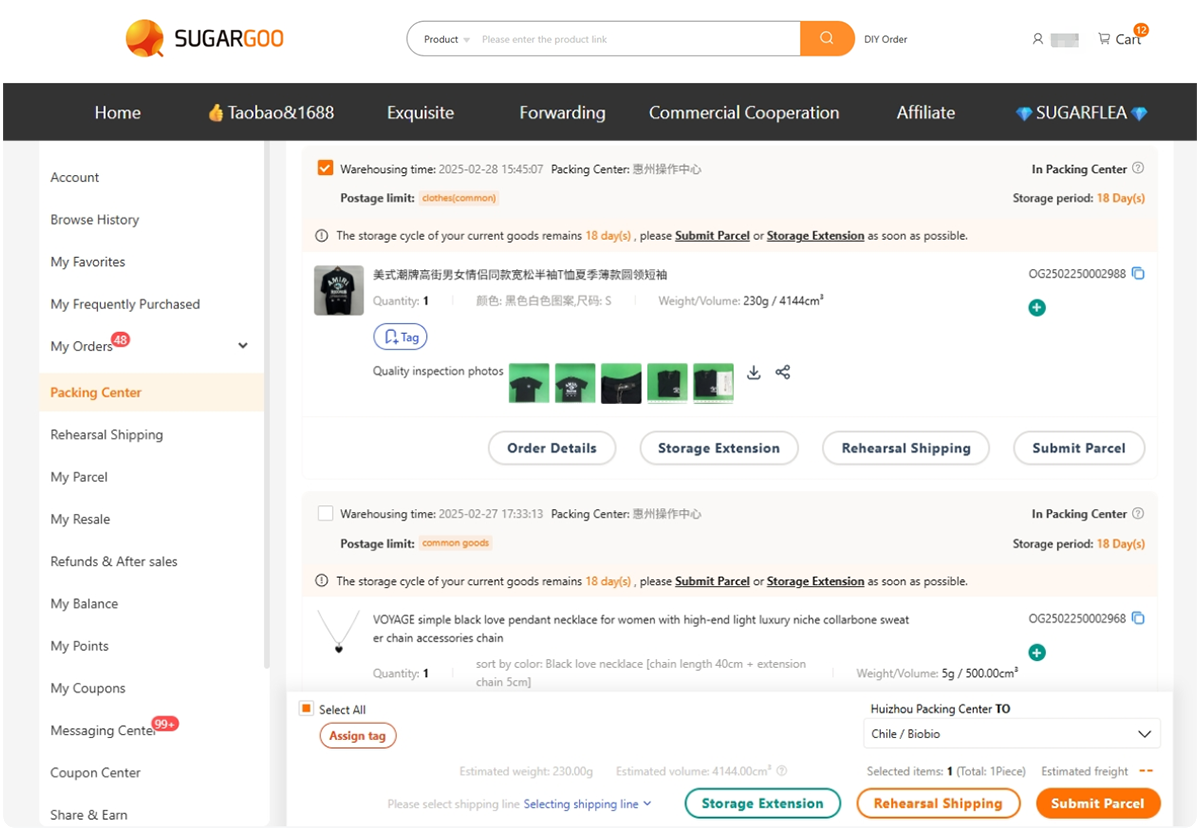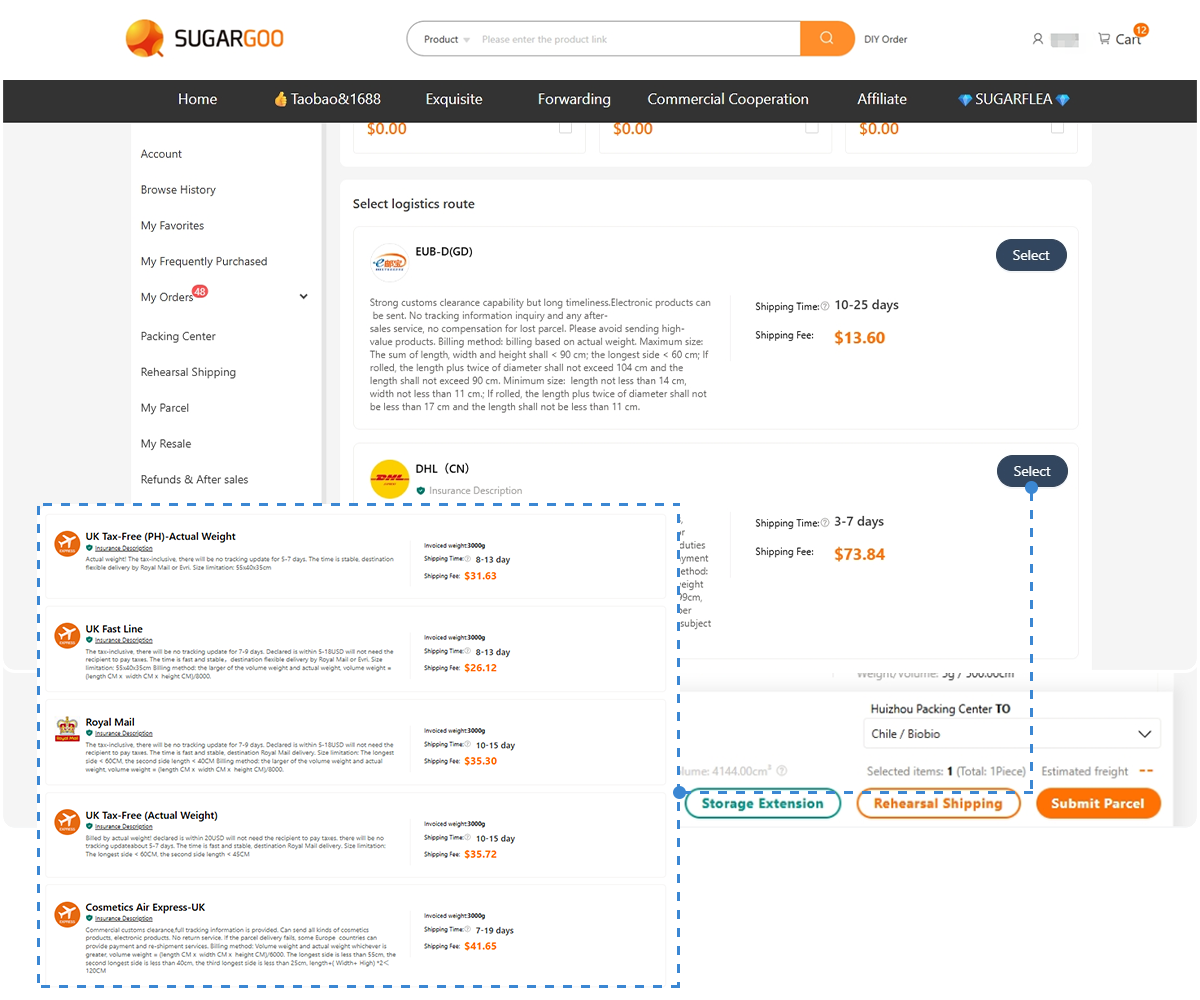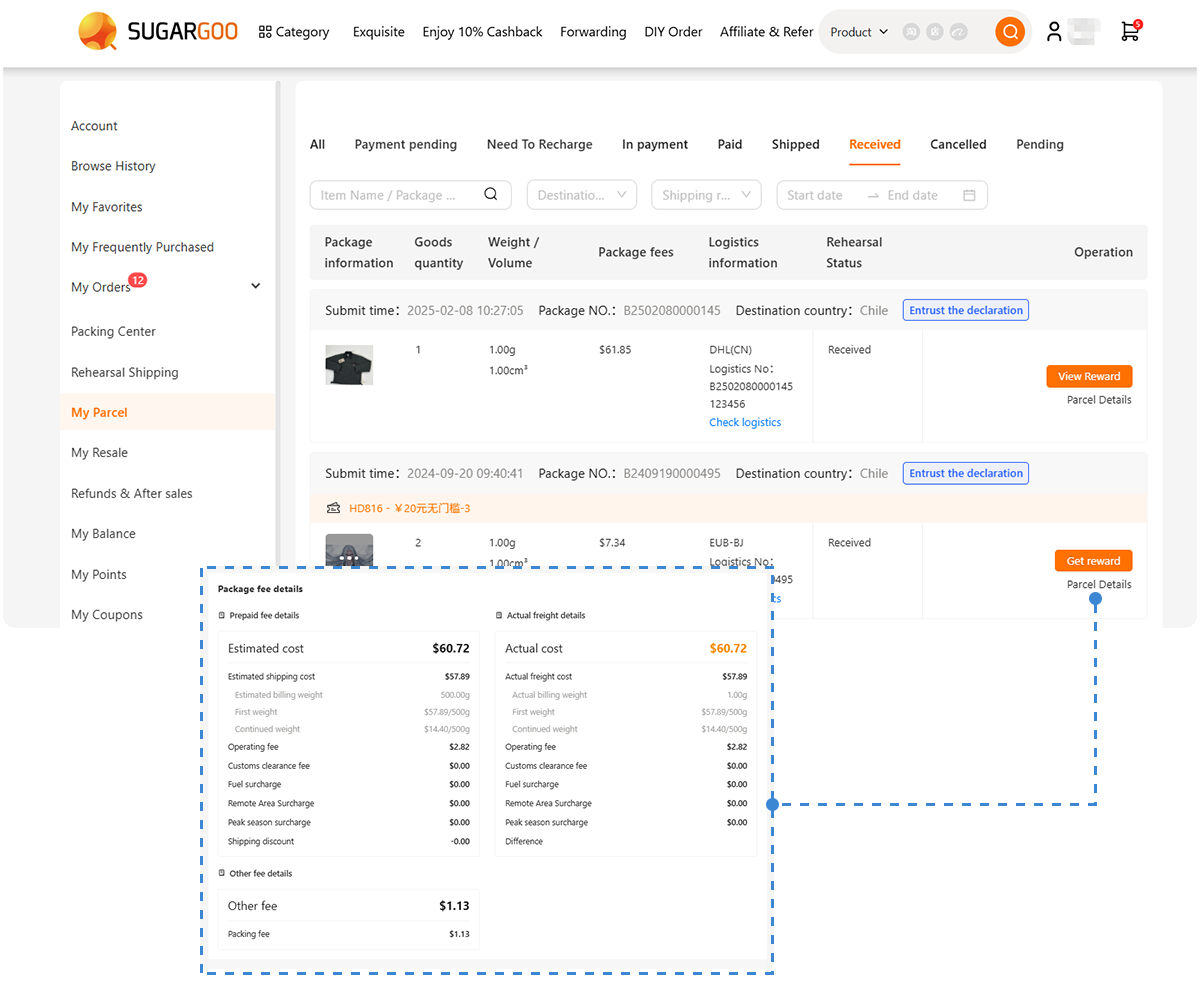If you’ve ever had your watch suddenly drop off your wrist, you already know what failed first—the spring bar. That tiny steel pin between your strap and lugs does all the heavy lifting. It keeps your entire watch connected to your arm.
And when it bends, breaks, or pops out unexpectedly, it can destroy your confidence faster than it ruins your strap.
The good news? Replacing broken watch spring bars is one of the simplest and most satisfying DIY watch repairs you can do. You don’t need a watchmaker’s bench—just the right tools, steady hands, and a few smart habits.
Let’s dive in step by step.
1. Why Spring Bars Fail (and How to Spot It Early)
Every strap, no matter how fancy, depends on spring bars. They’re small stainless steel rods with tiny telescoping ends that compress and snap into the watch lugs.
But even steel gets tired.
Over time, spring bars weaken because of:
- Repeated strap changes (especially with tight lugs)
- Moisture or sweat corrosion
- Impact or bending pressure
- Cheap aftermarket replacements
- Using the wrong size (too short, too long, or wrong diameter)
Common Signs of a Failing Spring Bar:
- Strap feels loose or wobbly
- One side pops out while changing straps
- Visible bend near one tip
- Clicking sound when you move the strap
- Deep scratches on inner lugs
If you catch it early, you can replace the bar before it fails completely. If not, you risk scratching your case—or worse—dropping your watch onto concrete.
2. Understanding Spring Bar Sizes and Types
Spring bars are not all the same. Using the wrong size or tension strength can make your strap insecure.
Here’s a quick breakdown of what you’ll find when shopping for replacements:
| Type | Description | Best For |
|---|---|---|
| Standard double flange | Most common; two tips for easy removal | Dress and casual watches |
| Fat spring bars | Thicker, high-tension bars | Diver or Seiko mod watches |
| Shoulderless bars | No external flanges | Solid end links, metal bracelets |
| Curved spring bars | Slight curve for tight lug cases | Watches with short lug distances |
| Quick-release bars | Built-in levers for strap changes | Leather or rubber straps |
| Titanium or gold-tone bars | Corrosion-resistant | Custom builds or color matching |
Measuring the Right Size
Use a digital caliper or ruler to measure the lug width between your case lugs—most are 18mm, 20mm, 22mm, or 24mm. The spring bar length must match that number exactly.
Diameter matters too:
- 1.5mm = standard
- 1.8mm = sportier builds
- 2.0mm = Seiko divers and modders’ choice
For custom projects or replacements, you can find a variety of options in Sugargoo’s watch strap and accessories page.
3. Tools You’ll Need
Before you start, make sure you have proper tools—don’t try to pry a spring bar out with a paperclip or knife. That’s how you end up scratching lugs or bending bars.
Essential tools (all available from Sugargoo’s watch repair tools collection):
- Spring bar removal tool (with fine forked tip)
- Tweezers (non-magnetic preferred)
- Microfiber cloth or work mat
- Spare spring bars in matching sizes
- Dust blower
- Soft tray or small parts organizer
Optional (but worth it):
- Watch case holder – keeps watch steady
- Magnifier – helps align spring tips perfectly
Having the right tools isn’t about luxury—it’s about avoiding damage. A $10 tool can save a $300 case.
4. Removing Broken Spring Bars
Before replacing, you need to safely remove what’s left of the broken ones. Depending on how it failed, it could be stuck, bent, or half-buried in the lug hole.
Step-by-Step:
- Lay the watch face down on a soft microfiber cloth.
- Locate the spring bar shoulders—the small flanges near each end.
- Insert the forked end of your spring bar tool between strap and lug.
- Compress one side gently and tilt the strap away.
- If one side is jammed or bent, use tweezers to lift it out carefully.
- Once removed, check both ends of the bar to see how it failed.
If the spring tip broke inside the lug hole, you may need a pin punch tool to clear it. Never force it with sharp metal—it can scar your case permanently.
5. Cleaning and Inspecting the Lugs
Before inserting new bars, always clean the lug area. Dust and metal debris often hide inside the holes, preventing proper seating.
Use:
- A blower to remove dust
- Rodico putty to lift debris
- A micro-brush with alcohol for deep cleaning
Check under good lighting. Both holes must be clean, smooth, and aligned.
If the lug holes are enlarged or uneven from repeated use, consider replacing the case or using fat spring bars for a tighter fit—these can be found under watch cases and accessories sections.
6. Installing New Spring Bars
Now for the fun part—putting everything back together.
Step-by-Step:
- Insert one end of the new spring bar into the lug hole.
- Compress the opposite end using your spring bar tool.
- Align the tip precisely with the second lug hole.
- Release the pressure gently until it clicks into place.
- Tug the strap lightly to make sure both ends are seated.
- Repeat for the other side.
You should feel solid tension when you pull gently on the strap—no movement or “click” sound.
If it feels loose, remove it and check whether the bar is slightly short or the lug holes are worn.
Pro tip: Always test each bar before wearing the watch. A 5-second check can prevent a 5-foot fall.
7. Upgrading to Better Spring Bars
If your watch still uses cheap stock bars, replacing them is one of the best upgrades you can make.
Fat spring bars (Seiko-style) offer extra tension and security for dive or outdoor watches.
Titanium or coated steel bars prevent rust in humid climates.
Quick-release spring bars make strap changes fast—ideal for collectors.
You’ll find a variety of these in Sugargoo’s watch strap accessories, compatible with Seiko, Citizen, and most microbrand lugs.
And if you’re planning a full strap swap, check How to Change Watch Straps with a Spring Bar Tool for a detailed guide.
8. Avoiding Future Breakage
Most spring bar failures aren’t about bad luck—they’re about bad habits. Here’s how to make sure it doesn’t happen again.
The Don’ts:
- Don’t change straps without a mat or pad.
- Don’t reuse visibly bent bars.
- Don’t use pliers or metal tools on finished lugs.
- Don’t wear leather straps in water—it corrodes the bar ends.
The Do’s:
- Replace spring bars once a year if you swap straps often.
- Lubricate the tips lightly with silicone grease for smoother motion.
- Store extra bars in a dry, sealed container.
- Check tightness monthly—especially on diver or field watches.
If you mod or assemble watches often, buy a spring bar assortment kit with multiple diameters—it’ll save you dozens of trips later.
9. When to Replace the Strap Too
Sometimes broken spring bars are a symptom, not the problem. If your strap holes are stretched or torn, the bar can’t sit securely no matter how strong it is.
Leather straps often wear out around the hole edges. Rubber straps may crack from UV exposure. Steel bracelets can develop warped end links that don’t hold tension properly.
Before reinstalling new bars, inspect your strap ends. If they’re damaged, it’s time to upgrade.
Sugargoo’s watch strap section includes genuine leather, stainless steel, NATO, and rubber options—all designed for standard 18–24mm lug widths.
10. Building a Long-Term Maintenance Habit
Replacing spring bars is just one small part of watch care. If you build or mod watches regularly, start thinking like a watchmaker: preventive maintenance is cheaper than repair.
Here’s a simple checklist to follow every 6 months:
- Inspect spring bars for bends or corrosion
- Clean lug holes and strap ends
- Check case back tightness
- Wipe and re-lubricate gasket seals
- Replace damaged or stretched straps
You can find all the required maintenance tools in the watch repair toolkit checklist article.
Taking 10 minutes twice a year keeps your watch secure, clean, and professional-looking—especially if you’re working on custom Seiko builds with NH35 or NH36 movements.
11. Where to Buy Genuine Spring Bars
It’s tempting to grab a $2 pack of 100 spring bars on Amazon. But low-grade steel or incorrect sizing can ruin your lugs permanently.
That’s why professional modders source parts through Sugargoo, the trusted Taobao agent for watch parts.
Sugargoo lets you:
- Shop directly from verified Seiko, Citizen, and aftermarket part suppliers.
- Get QC photos before shipping. (See our QC guide.)
- Combine multiple items like straps, bars, and movement parts into one shipment.
- Save on shipping using their combine orders guide.
That means fewer surprises, more reliability, and better results for every build.
12. Final Thoughts: A Small Fix That Protects Everything
Most people never think about spring bars until they fail—and by then, it’s too late. But now you know better.
Replacing them is simple, affordable, and one of the easiest ways to protect your watch investment. It’s the kind of small, invisible maintenance that separates careless owners from true enthusiasts.
Because the truth is, watchmaking isn’t about ticking seconds—it’s about mastering small details. And a tiny spring bar, when installed right, can carry the weight of a lifetime.
So grab your tools, clean your lugs, and make sure that every click you hear isn’t just a connection— it’s confidence.
